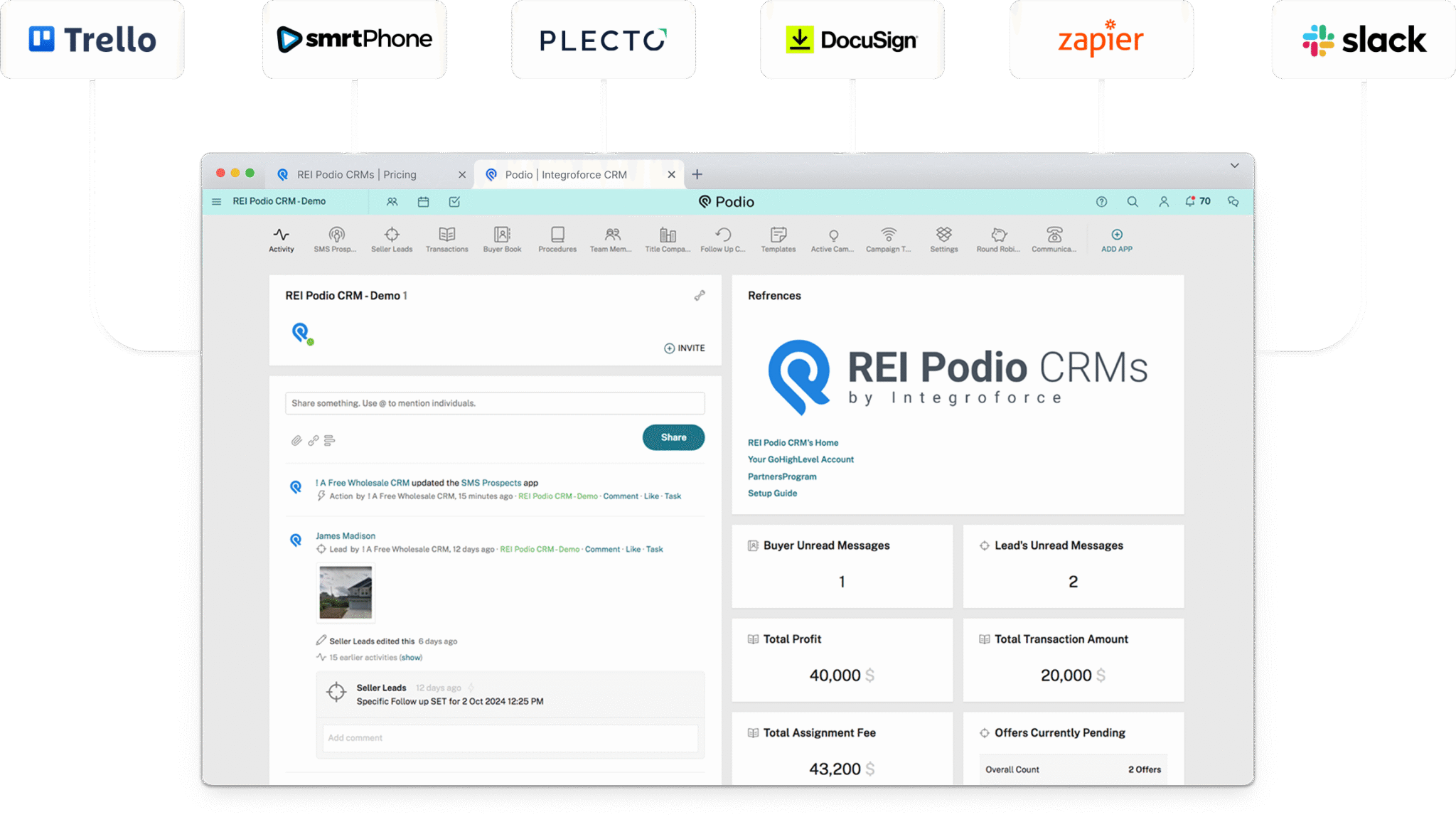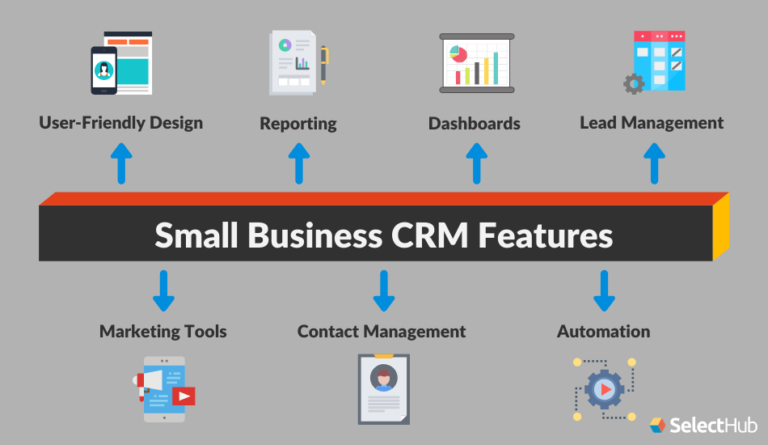Unlocking Growth: How CRM, Marketing, and Customer Feedback Forge a Powerful Alliance

Unlocking Growth: How CRM, Marketing, and Customer Feedback Forge a Powerful Alliance
In today’s fiercely competitive business landscape, understanding and responding to customer needs is paramount. Companies are no longer just selling products or services; they are curating experiences. This shift necessitates a holistic approach, one that seamlessly integrates Customer Relationship Management (CRM) systems, strategic marketing initiatives, and the invaluable insights gleaned from customer feedback. This article delves into the synergistic relationship between these three pillars, exploring how they can be leveraged to drive sustainable growth, enhance customer loyalty, and ultimately, transform your business.
The Cornerstone: Understanding the Role of CRM
At the heart of any successful customer-centric strategy lies a robust CRM system. Think of it as the central nervous system of your business, connecting all customer-related data and processes. A well-implemented CRM system is much more than just a contact database; it’s a dynamic tool that empowers businesses to:
- Centralize Customer Data: Consolidate all customer interactions, preferences, purchase history, and communication logs into a single, accessible repository. This 360-degree view of the customer is crucial for personalized engagement.
- Streamline Sales Processes: Automate lead management, opportunity tracking, and sales forecasting, enabling sales teams to work more efficiently and close deals faster.
- Enhance Marketing Campaigns: Segment customer data to create targeted marketing campaigns that resonate with specific customer groups, boosting engagement and conversion rates.
- Improve Customer Service: Provide customer service representatives with instant access to customer information, allowing them to resolve issues quickly and effectively.
- Analyze Customer Behavior: Track customer interactions to identify trends, predict future behavior, and make data-driven decisions to improve customer experience.
The benefits of a CRM system are undeniable. By providing a comprehensive view of the customer journey, businesses can tailor their interactions to meet individual needs and preferences, leading to increased customer satisfaction, loyalty, and ultimately, profitability. The choice of CRM software depends on the specific needs and size of the business. Popular options include Salesforce, HubSpot, Zoho CRM, and Microsoft Dynamics 365, each offering a range of features and pricing plans.
Marketing’s Role: Crafting the Right Message, at the Right Time
Marketing, in conjunction with CRM, plays a vital role in attracting, engaging, and retaining customers. It’s about crafting the right message, delivering it at the right time, and through the right channels. A well-defined marketing strategy, fueled by CRM data, can significantly impact business growth. Here’s how:
- Targeted Campaigns: CRM data enables marketers to segment their audience and create highly targeted campaigns that resonate with specific customer groups. This leads to higher engagement rates and improved conversion rates.
- Personalized Content: By understanding customer preferences and behavior, marketers can personalize content, offers, and recommendations to create a more relevant and engaging experience.
- Lead Nurturing: CRM systems can automate lead nurturing processes, guiding potential customers through the sales funnel and converting them into paying customers.
- Marketing Automation: Automate repetitive marketing tasks, such as email campaigns, social media posting, and lead scoring, freeing up marketers to focus on strategic initiatives.
- Performance Measurement: CRM integration allows marketers to track the performance of their campaigns, measure ROI, and make data-driven decisions to optimize their marketing efforts.
Marketing strategies should be aligned with the overall business goals and target audience. This includes defining the ideal customer profile, identifying key marketing channels, and creating compelling content that addresses customer needs and pain points. The integration of CRM and marketing tools allows businesses to create a seamless customer journey from initial awareness to purchase and beyond. This holistic approach is key to building strong customer relationships and driving long-term growth.
The Power of Customer Feedback: The Voice of Your Customers
Customer feedback is the lifeblood of any successful business. It provides invaluable insights into customer experiences, allowing businesses to identify areas for improvement, understand customer needs, and ultimately, build stronger relationships. Customer feedback comes in many forms, including:
- Surveys: Online surveys, post-purchase surveys, and customer satisfaction surveys provide valuable insights into customer experiences and identify areas for improvement.
- Reviews: Online reviews on platforms like Google, Yelp, and industry-specific websites offer valuable feedback on products, services, and overall customer experience.
- Social Media Monitoring: Monitoring social media channels allows businesses to track customer sentiment, respond to complaints, and identify opportunities for engagement.
- Customer Support Interactions: Analyzing customer support interactions, such as emails, phone calls, and chat logs, can reveal common issues, customer pain points, and areas for improvement.
- Focus Groups: Conducting focus groups allows businesses to gather in-depth feedback on products, services, and marketing campaigns.
Collecting customer feedback is only the first step. The key is to analyze the feedback, identify trends, and take action to address customer concerns and improve the overall customer experience. Customer feedback should be integrated into the CRM system to provide a comprehensive view of the customer journey. This allows businesses to personalize their interactions, tailor their marketing efforts, and proactively address customer needs. Implementing a feedback loop, where customer feedback is collected, analyzed, and acted upon, is essential for continuous improvement.
The Synergy: How CRM, Marketing, and Customer Feedback Work Together
The true power of CRM, marketing, and customer feedback lies in their synergistic relationship. When these three elements are integrated and aligned, businesses can create a powerful engine for growth and customer loyalty. Here’s how they work together:
- CRM Fuels Marketing: CRM data provides marketers with the insights they need to create targeted campaigns, personalize content, and optimize their marketing efforts. By understanding customer preferences, behavior, and purchase history, marketers can deliver the right message to the right customer at the right time.
- Marketing Drives CRM Data: Marketing campaigns generate valuable data about customer interactions, engagement, and conversion rates. This data is then fed back into the CRM system, providing a more complete view of the customer journey.
- Customer Feedback Informs Both: Customer feedback provides valuable insights into customer experiences, allowing businesses to identify areas for improvement and refine their marketing strategies. This feedback is then integrated into the CRM system, providing a more comprehensive view of the customer and informing future interactions.
- Personalized Customer Experience: By integrating CRM, marketing, and customer feedback, businesses can create a personalized customer experience that builds strong relationships and drives customer loyalty. This includes tailoring content, offers, and recommendations to individual customer preferences and needs.
- Continuous Improvement: The integration of these three elements creates a continuous feedback loop that allows businesses to continuously improve their products, services, and customer experience. This is essential for staying ahead of the competition and driving long-term growth.
This integrated approach allows businesses to move beyond transactional relationships and build genuine connections with their customers. By understanding their needs, preferences, and pain points, businesses can tailor their interactions to create a more meaningful and valuable experience.
Practical Steps to Implement a CRM-Driven, Customer-Centric Strategy
Implementing a CRM-driven, customer-centric strategy requires careful planning and execution. Here are some practical steps to get you started:
- Define Your Goals: Clearly define your business goals and objectives. What do you want to achieve with your CRM, marketing, and customer feedback initiatives?
- Choose the Right CRM System: Select a CRM system that meets your specific needs and budget. Consider factors such as features, scalability, and integration capabilities.
- Integrate Your Systems: Integrate your CRM system with your marketing automation tools, customer service platforms, and other relevant systems. This will ensure that all customer data is centralized and accessible.
- Clean and Organize Your Data: Ensure that your customer data is accurate, complete, and well-organized. This is essential for effective segmentation and personalization.
- Segment Your Audience: Segment your audience based on demographics, behavior, and purchase history. This will allow you to create targeted marketing campaigns and tailor your interactions.
- Create a Customer Feedback Loop: Implement a system for collecting, analyzing, and acting on customer feedback. This includes surveys, reviews, social media monitoring, and customer support interactions.
- Train Your Employees: Train your employees on how to use the CRM system, how to collect customer feedback, and how to deliver a positive customer experience.
- Monitor and Analyze Your Results: Track the performance of your CRM, marketing, and customer feedback initiatives. Analyze your results and make adjustments as needed.
- Foster a Customer-Centric Culture: Create a company culture that prioritizes customer satisfaction and loyalty. This includes empowering employees to make decisions that benefit the customer.
By following these steps, businesses can create a powerful CRM-driven, customer-centric strategy that drives growth, enhances customer loyalty, and transforms their business.
Overcoming Challenges and Ensuring Success
While the benefits of integrating CRM, marketing, and customer feedback are undeniable, there are also challenges to overcome. Here are some common obstacles and how to address them:
- Data Silos: Data silos can prevent businesses from getting a complete view of the customer. To overcome this, integrate all of your systems and ensure that data is shared across departments.
- Lack of Data Quality: Inaccurate or incomplete data can undermine the effectiveness of your CRM and marketing efforts. Implement data cleansing procedures and ensure that your data is accurate and up-to-date.
- Resistance to Change: Employees may resist adopting new technologies or processes. Provide training and support to help employees understand the benefits of the new systems and processes.
- Lack of Integration: If your CRM, marketing automation, and customer feedback systems are not properly integrated, you will not be able to realize the full benefits of these tools. Ensure that your systems are integrated and that data flows seamlessly between them.
- Measuring ROI: It can be challenging to measure the ROI of your CRM, marketing, and customer feedback initiatives. Define clear metrics and track your progress to demonstrate the value of your investments.
Addressing these challenges requires a proactive approach. It’s crucial to build a strong foundation, including proper training, data governance, and a customer-centric culture. By continuously monitoring, evaluating, and adapting your strategies, you can overcome these obstacles and ensure the success of your CRM-driven, customer-centric initiatives.
The Future of CRM, Marketing, and Customer Feedback
The landscape of CRM, marketing, and customer feedback is constantly evolving. Emerging technologies and trends are reshaping the way businesses interact with their customers. Here are some key trends to watch:
- Artificial Intelligence (AI): AI is being used to automate tasks, personalize customer interactions, and predict customer behavior. AI-powered chatbots, personalized recommendations, and predictive analytics are becoming increasingly common.
- Machine Learning (ML): ML algorithms are being used to analyze customer data, identify patterns, and make data-driven decisions. This includes predicting customer churn, identifying upsell opportunities, and optimizing marketing campaigns.
- Voice Search and Conversational Marketing: Voice search is becoming increasingly popular, and businesses are adapting their marketing strategies to take advantage of this trend. Conversational marketing, which uses chatbots and other conversational tools to engage with customers, is also on the rise.
- Hyper-Personalization: Customers expect personalized experiences. Businesses are using data to tailor content, offers, and recommendations to individual customer preferences and needs.
- Data Privacy and Security: Data privacy and security are becoming increasingly important. Businesses must be transparent about how they collect and use customer data and take steps to protect customer information.
Staying ahead of these trends requires a commitment to innovation and continuous learning. Businesses that embrace these technologies and trends will be well-positioned to thrive in the future. By continuously adapting and evolving their strategies, businesses can ensure that they are meeting the changing needs of their customers and driving long-term growth.
Conclusion: Building a Customer-Centric Empire
In conclusion, the synergy between CRM, marketing, and customer feedback is the key to unlocking sustainable growth and building lasting customer relationships. By implementing a well-defined strategy that integrates these three pillars, businesses can gain a deeper understanding of their customers, personalize their interactions, and create a more meaningful customer experience. This holistic approach is essential for driving customer loyalty, enhancing brand reputation, and ultimately, achieving long-term success.
The journey to customer-centricity is not always easy, but the rewards are well worth the effort. By embracing a customer-first mindset, investing in the right tools and technologies, and fostering a culture of continuous improvement, businesses can build a customer-centric empire that thrives in today’s dynamic market. It’s about moving beyond transactions and building genuine relationships, creating a loyal customer base that not only buys your products or services but also becomes advocates for your brand. This is the future of business, and the time to embrace it is now.



